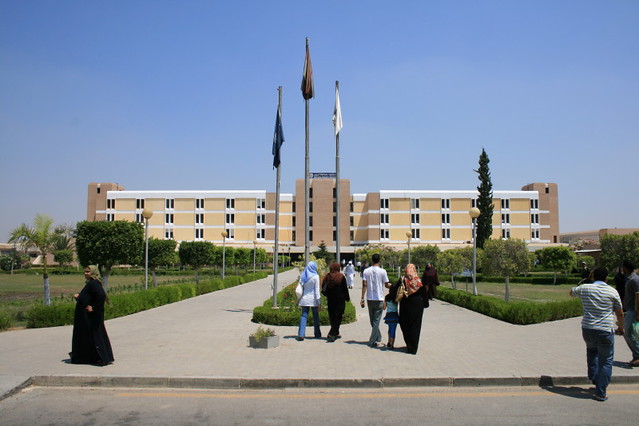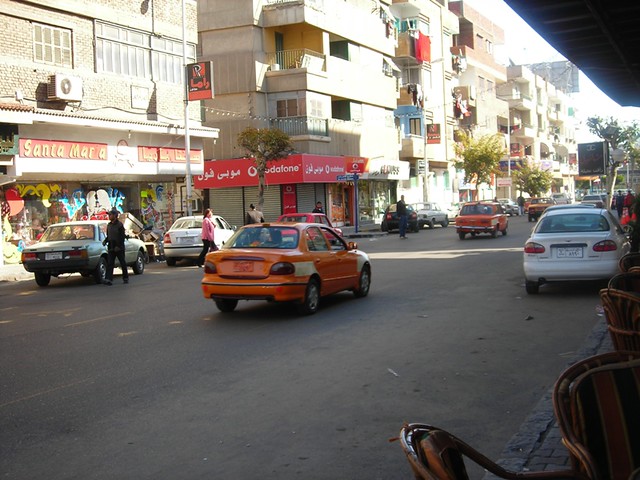NOESY
General procedure for synthesis of compounds 7a–7c from the three-component reaction of isatins, proline and aroylacrylic acids: A mixture of isatin (1.0 mmol), proline (1.0 mmol) and aroylacrylic acid (1.0 mmol) in 4.0 mL aqueous ethanol (1:3) was heated in an oil bath to reflux temperature for 15 min. The resulting precipitates were collected by filtration and washed with cold ethanol to give analytically pure products 7. 7a: orange powder, 22%, mp 215–216 °C. 1H (500 MHz, DMSO-d6) and 13C NMR (125 MHz, DMSO-d6) data are given in Table 3. MS (m/z) (%): 462 (M+, 52), 435 (45), 405 (8), 353 (12), 317 (18), 289 (52), 208 (30), 173 (33), 127 (46), 75 (30), 41 (100); anal. calcd for C21H15BrСl2N2O (462.17): C 54.57; H 3.27; N 6.06; found: C 54.48; H 3.19; N 6.10.
The tentative mechanism for the formation of 7a is outlined in Scheme 3. First, the initially formed spiropyrrolizidine undergoes decarboxylation via ring opening of the spiro cycle. The subsequent enolization of the intermediate leads to the formation of the dihydropyrrolizinyl oxindole system.
Scheme 3:
Tentative reaction mechanism for the decarboxylative cyclative rearrangement of the initial three-component product.
For assigning structures of byproducts we carried out the reaction of isatins 1, aroylacrylic acids 5 and proline in a boiling mixture of EtOH and water, which resulted in the formation and isolation of compounds 7a–7c (Scheme 2). The unexpected structure of rearranged product 7a was confirmed by 1H, 13C and 2D NMR spectroscopy (Table 3).
Scheme 2:
The synthesis of compounds 7a–7c.
| entry | functional group | 13C | 1H | ||
|---|---|---|---|---|---|
| δ, ppm | δ, ppm | multiplicity | J, Hz | ||
| 1 | 1-NH | – | 10.59 | s | – |
| 2 | 2-CO | 178.09 | – | – | – |
| 3 | 3-CH | 45.33 | 4.56 | s | – |
| 4 | 3a-C (oxindole) | 134.06 | – | – | – |
| 5 | 4-CH (oxindole) | 127.55 | 7.05 | s | – |
| 6 | 5-C (oxindole) | 113.56 | – | – | – |
| 7 | 6-CH (oxindole) | 130.77 | 7.33 | dd | 8.1; 2.2 |
| 8 | 7-CH (oxindole) | 111.57 | 6.80 | d | 8.1 |
| 9 | 7a-C (oxindole) | 142.21 | – | – | – |
| 10 | 5-C | 124.67 | – | – | – |
| 11 | 6-C | 120.38 | – | – | – |
| 12 | 7-CH | 99.69 | 5.30 | s | – |
| 13 | 7a-C | 138.34 | – | – | – |
| 14 | 1-CH2 | 24.43 | 2.85–2.63 | m | – |
| 15 | 2-CH2 | 27.31 | 2.43–2.27 | m | – |
| 16 | 3-CH2 | 46.26 | 4.20–4.02, 3.90–3.70 | m | – |
| 17 | 1-C Ar | 129.50 | – | – | – |
| 18 | 2-CH Ar | 129.87 | 7.82 | d | 1.8 |
| 19 | 3-C Ar | 133.12 | – | – | – |
| 20 | 4-C Ar | 131.63 | – | – | – |
| 21 | 5-CH Ar | 130.95 | 7.65 | d | 8.1 |
| 22 | 6-CH Ar | 128.44 | 7.55 | dd | 8.2; 1.8 |
Figure 7:
The selected COSY, NOESY and HMBC correlations of the signals in the 1H and 13C NMR spectra of compound 7a.
see................http://www.beilstein-journals.org/bjoc/single/articleFullText.htm?publicId=1860-5397-10-8
The regioselective synthesis of spirooxindolo pyrrolidines and pyrrolizidines via three-component reactions of acrylamides and aroylacrylic acids with isatins and α-amino acids
1State Scientific Institution “Institute for Single Crystals”
of National Academy of Sciences of Ukraine, 60, Lenin ave., Kharkov,
61178, Ukraine
2Antidiabetic Drug Laboratory, State Institution “V.J. Danilevsky Institute of Problems of Endocrine Pathology at the Academy of Medical Sciences of Ukraine”, 10, Artem St., Kharkov, 61002, Ukraine
3Organic Chemistry Department, V.N. Karazin Kharkov National University, 4, Svobody Sq., 61077, Kharkov, Ukraine,
4A.V. Bogatsky physico-chemical institute of the National Academy of Sciences of Ukraine, 86, Lustdorfskaya doroga, 65080, Odessa, Ukraine
2Antidiabetic Drug Laboratory, State Institution “V.J. Danilevsky Institute of Problems of Endocrine Pathology at the Academy of Medical Sciences of Ukraine”, 10, Artem St., Kharkov, 61002, Ukraine
3Organic Chemistry Department, V.N. Karazin Kharkov National University, 4, Svobody Sq., 61077, Kharkov, Ukraine,
4A.V. Bogatsky physico-chemical institute of the National Academy of Sciences of Ukraine, 86, Lustdorfskaya doroga, 65080, Odessa, Ukraine
This article is part of the Thematic Series "Multicomponent reactions II".
Guest Editor: T. J. J. Müller
Beilstein J. Org. Chem. 2014, 10, 117–126.
GOA FOOD, INDIA, GOA


KING FISH PICKLE
 Mojea Goa Amchi Mumbai
Mojea Goa Amchi Mumbai


 Mojea Goa Amchi Mumbai
Mojea Goa Amchi Mumbai

Prawns Moile..... Sweet, Sour and Spicy......

Goan Sausages Grays made with Onions and Potatoes n fried with a hint of Vinegar and Coconut Oil severed with Pav....
 Mojea Goa Amchi Mumbai
Mojea Goa Amchi Mumbai
Yummy Juicy Mankios...... — with Francisco Xavier Dcosta Goa, Thebigcountryband Goa, Pudhari Goa and 19 others.


 Mojea Goa Amchi Mumbai
Mojea Goa Amchi Mumbai
All set to cook green masala... — with Colin Glen Fernandes, Sarita Uchil Shetty, Alcina Gomes and 15 others.

 Mojea Goa Amchi Mumbai
Mojea Goa Amchi Mumbai Mojea Goa Amchi Mumbai
Mojea Goa Amchi Mumbai
Posta Fish Rava Fry (King Fish) — with Devyani Toraskar, Aah Goa, Fishermans Wharf Goa and 34 others.

GÖÄÑ FìSH CÜRRY RìCÉ
 DRY PRAWNS CURRY
DRY PRAWNS CURRY

PÖRK CHìLLY FRY. CÜT Ñ CLÉÄÑ PÖRK ìÑ TO MÉDìMìÜM ÖR SMÄLL PìÉCÉS, WÄSH Ñ MÄRìÑÄTÉ WìJH SÄLT ÖR VìÑÉGÄR FÖR MÄX 1 .HÖÜR THÉÑ ìÑ Ä PÅÑ ÖR KÄDÄìL ADD WÅTèR Ñ MÄRìÑATÉD MÉÄT Ñ
LÉT ìT ßÖìL ÖÑCÉ DÖNÉ ÄDD ÖìL Ñ FRY ìT ADD ßìÑDÄ SÖL (KÖKÜM FÜLL) ÖÑìÖÑS, GARLìC Ö GìÑGÉR FìÑÉ CHÖPPÉD, ÖÑìÖÑ, SALT Ñ SAFFRÖÑ POWDÉR Ä PìÑCH ÄÑD GRÉÉÑ CHìLLY SLìT FRY WÉLL Ñ RÉÄDY TÖ SÉRVè... TRY Ñ LÉT MÉ KÑÖW

/////////////













